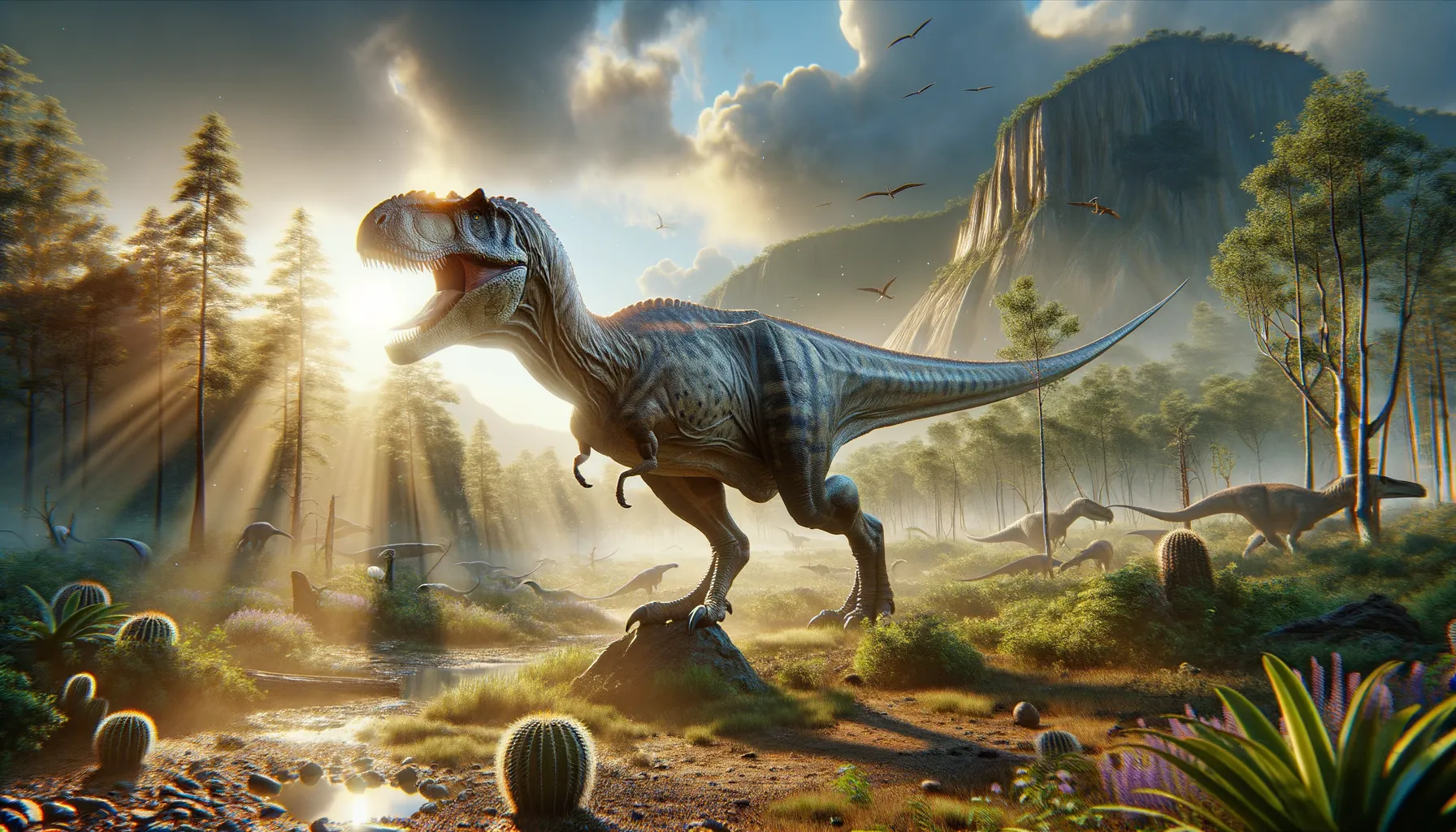
Kelmayisaurus
A fierce predator of ancient landscapes.
Period
Cretaceous
Length
Measured about 10 meters long.
Height
Estimated to be around 3 meters tall.
Weight
Weighed between 1 to 2 tons.
Kelmayisaurus was a formidable carnivorous dinosaur that roamed parts of ancient China during the Cretaceous period. This large predator is known from partial fossil remains but is believed to have been a powerful and swift hunter. Despite limited fossil evidence, Kelmayisaurus has sparked considerable interest among paleontologists, as it provides crucial insights into the diversity of theropod dinosaurs. Its evolutionary relationships and ecological role continue to be subjects of research.
Diet
Kelmayisaurus had a carnivorous diet, preying on smaller dinosaurs and potentially scavenging as well. Its sharp teeth and powerful jaws made it an effective predator.
Hunting
Kelmayisaurus likely hunted using its keen senses to track prey, relying on its speed and agility. It may have hunted alone, ambushing its prey with a sudden burst of speed.
Environmental challenges
Kelmayisaurus lived in a dynamic environment with fluctuating temperatures and occasional resource scarcity. These challenges would have required adaptability, perhaps influencing its solitary hunting style. Competition for food with other predators also shaped its survival strategies.
Speed
Believed to be quick due to its bipedal nature.
Lifespan
Estimated to live several decades.
First discovery
First discovered in China, in 1973.
Fun Facts
- Kelmayisaurus was a large carnivorous dinosaur that lived during the early Cretaceous period, roughly 120 million years ago.
- Fossils of Kelmayisaurus were first found in the Xinjiang region of China, giving insight into the diversity of dinosaurs in Asia.
- It is believed that Kelmayisaurus belonged to the same family as the more famous Tyrannosaurus rex, though it lived much earlier.
- Kelmayisaurus had sharp teeth and strong jaws, making it an effective predator in its environment.
- The name Kelmayisaurus translates to 'Kelmayi lizard,' named after the area where it was discovered.
- Kelmayisaurus is known from very limited fossil remains, primarily a jawbone, making it a bit of a mystery among paleontologists.
- Despite limited evidence, it is estimated that Kelmayisaurus could have reached lengths of up to 10 meters or 33 feet.
Growth and Development
Kelmayisaurus would have started life as a small hatchling, growing rapidly in its early years. Juveniles needed to quickly develop robust limbs and muscles to become efficient hunters. Growth rates likely slowed as they neared adult size, concentrating energy on survival and reproduction.
Habitat
Its habitat consisted of diverse landscapes with open areas suitable for fast movement. Forested regions and water sources nearby would have provided varied hunting grounds. The environment was rich in prey, but also fierce competition from other predatory dinosaurs.
Interaction with other species
As a top predator, Kelmayisaurus would have competed with other large theropods for food resources. Smaller species were primary prey, while larger dinosaurs might have avoided direct confrontations. Its presence influenced the behavior and distribution of herbivorous species.
Natural lifespan
Kelmayisaurus likely lived up to 30 years in the wild.
Reproduction
Kelmayisaurus reproduced by laying eggs, with females likely guarding the nests. Hatchlings were vulnerable and required protection from predators. Parental care might have been limited, as young likely fended for themselves after a brief period.
Social behaviour
Little is known about the social behavior of Kelmayisaurus, but it may have been solitary or operated in loose groups. These interactions were likely driven by mating or competition for territory and food resources.
Fossil locations
Fossils of Kelmayisaurus have been found in the Xinjiang region of China. The fossil record is sparse, consisting mainly of jaw fragments, hinting at the need for ongoing excavations. These discoveries contribute significantly to understanding the diversity of predatory dinosaurs in Asia.
